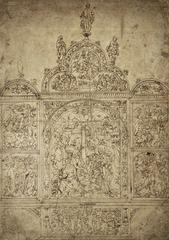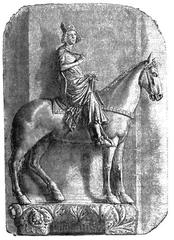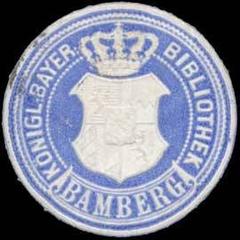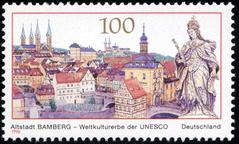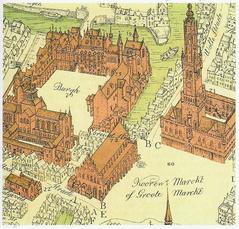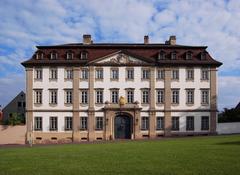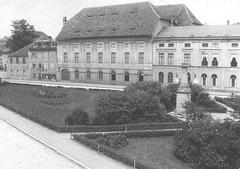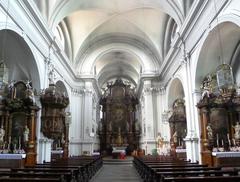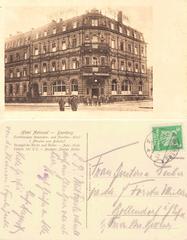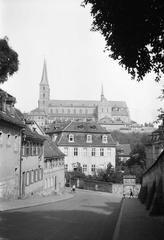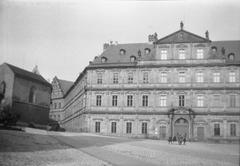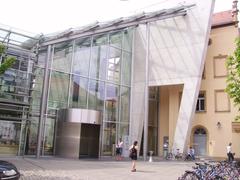Abschnitt Des Ludwig-Donau-Main-Kanals: Visiting Hours, Tickets, and Travel Guide for Bamberg Historical Sites
Date: 14/06/2025
Introduction
The Ludwig-Donau-Main-Kanal, often called the Ludwig Canal or “Alter Kanal,” is a marvel of 19th-century engineering and a symbol of Bavaria’s historical ingenuity. Located in Bamberg, this canal once linked the Danube and Main rivers, connecting the North Sea to the Black Sea and playing a pivotal role in Europe’s inland navigation and economic development. Today, the canal and its surviving features—especially Schleuse 100 (Lock 100)—offer visitors a unique blend of heritage, scenic beauty, and recreational opportunities. This guide provides a comprehensive overview of the canal’s history, cultural significance, practical visitor information, and tips for making the most of your visit to Bamberg and its historical sites (Wikipedia: Ludwig Canal; bamberg.info: Schleuse 100; ludwig-donau-main-kanal.de).
Table of Contents
- Historical Overview
- Engineering and Construction
- Economic and Cultural Significance
- Challenges, Decline, and Preservation
- Visiting the Ludwig-Donau-Main-Kanal in Bamberg
- Visitor Tips and Recommendations
- FAQ
- Sources and Further Reading
Historical Overview
Origins and Vision
The concept of a navigable connection between the Danube and Main rivers dates back centuries, with King Ludwig I of Bavaria championing the project in the early 19th century. The canal was constructed between 1836 and 1846 under the supervision of engineer Heinrich Freiherr von Pechmann. Stretching approximately 172 kilometers, it featured 100 locks to surmount an elevation difference of 264 meters, enabling a navigable route linking the North Sea and Black Sea (Wikipedia: Ludwig Canal; de.wikipedia: Ludwig-Donau-Main-Kanal).
Engineering and Construction
The Ludwig-Donau-Main-Kanal was a major feat of engineering, employing 100 chamber locks, many of which are preserved today. The canal was relatively narrow (about 15.8 meters wide and 1.46 meters deep), limiting it to smaller vessels. At its transport peak (circa 1850), the canal moved up to 200,000 tons of goods annually. Notably, it facilitated the transport of industrial components across Europe, such as parts for the Chain Bridge in Budapest (WWA Bayern).
Economic and Cultural Significance
Upon completion, the canal became a vital artery for Bavarian commerce, boosting trade and industrialization. It also represented the era’s confidence in technology and continental integration. Despite its initial promise, competition from the expanding railway network and persistent operational challenges limited the canal’s long-term economic success (Wikipedia: Ludwig Canal; de.wikipedia: Ludwig-Donau-Main-Kanal).
Challenges, Decline, and Preservation
The canal’s narrow dimensions and reliance on numerous locks made navigation slow and labor-intensive. Water supply issues and the rapid rise of rail transport reduced its commercial viability. After suffering damage during World War II, the canal was officially closed in 1950, and many sections were later filled in or built over. However, significant stretches—including Bamberg’s terminus—remain preserved and are recognized as historic monuments (ludwig-donau-main-kanal.com; Landkreis Bamberg).
Visiting the Ludwig-Donau-Main-Kanal in Bamberg
Visiting Hours
- The canal towpaths and Lock 100 area are open to the public year-round, generally from dawn to dusk.
- The lock-keeper’s house café (at ERBA-Park) typically operates daily from 10:00 AM to 6:00 PM; check the official site for current hours (bamberg.info: Schleuse 100).
Tickets and Tours
- There is no entrance fee for outdoor areas, including Schleuse 100.
- Guided tours about the canal’s history and technology are occasionally available via the Bamberg tourist office and museums; tickets for these tours should be booked in advance (bamberg.info: Schleuse 100).
- Seasonal boat tours on the Main-Danube Canal can be booked online or on-site (ludwig-donau-main-kanal.de).
Accessibility
- Most towpaths are flat and suitable for wheelchairs and strollers, though after rain some sections may be muddy or uneven.
- The lock-keeper’s house and major paths are wheelchair accessible.
- Contact the Bamberg tourism office for detailed accessibility guidance.
Getting There
- The canal is a short walk from Bamberg’s old town and is accessible by city buses (stopping near ERBA-Park or Bug district).
- Parking is available nearby, though spots fill quickly on weekends and during events (Bamberg Info).
Nearby Attractions
- Bamberg Old Town: UNESCO World Heritage Site, medieval architecture, and renowned breweries.
- Bamberg Cathedral and Altes Rathaus: Key historical sites within walking distance.
- Sieben-Flüsse-Wanderweg (Seven Rivers Trail): Scenic hiking and cycling, incorporating canal towpaths (ludwig-donau-main-kanal.de).
Outdoor Activities
- Walking and Cycling: Flat, family-friendly canal paths with benches and rest stops.
- Boating and Canoeing: Schleuse 100 is operational for small boats and canoes during boating season.
- Nature and Wildlife: The canal corridor is rich in flora and fauna, perfect for birdwatchers and photographers (Ludwig-Donau-Main-Kanal.de).
Events and Photography
- Occasional heritage walks, treideln (historic barge-pulling) demonstrations, and art installations.
- Best photo opportunities: Schleuse 100, canal bridges, and tranquil towpaths—especially at sunrise or sunset.
- For current events, check Bamberg’s tourism calendar or the official canal website (ludwig-donau-main-kanal.de).
Visitor Tips and Recommendations
- Best Time to Visit: Spring through autumn offers the best weather; mornings and weekdays are quieter.
- Facilities: Restrooms are limited; plan ahead. Dining and cafés are available in Bamberg’s old town and at the lock-keeper’s house.
- Safety: Canal banks can be slippery; supervise children and avoid swimming.
- What to Bring: Comfortable shoes, water, sun protection, and a camera for photos.
- Plan Ahead: Download maps and GPS routes from canal websites or use navigation apps like Komoot (Komoot Highlight).
FAQ
Q: What are the visiting hours for the Ludwig-Donau-Main-Kanal in Bamberg?
A: Towpaths and canal sites are open year-round, generally from dawn to dusk. The lock-keeper’s house café has set hours; check ahead.
Q: Is there an entrance fee?
A: No, visiting the canal and Schleuse 100 is free. Guided tours and boat excursions may require tickets.
Q: Are guided tours available?
A: Yes, via Bamberg’s tourist office and museums. Book ahead during high season.
Q: Is the canal accessible for wheelchairs and strollers?
A: Most main paths are accessible, but some uneven sections exist—especially after rain.
Q: How do I get there?
A: Walk from Bamberg’s old town, use city buses, or park nearby.
Q: What other attractions are nearby?
A: Bamberg Old Town, Bamberg Cathedral, Altes Rathaus, and the Seven Rivers Trail.
Conclusion
The Abschnitt des Ludwig-Donau-Main-Kanals in Bamberg is a living monument to Bavaria’s engineering history, offering visitors a chance to explore preserved locks, scenic towpaths, and cultural heritage within walking distance of Bamberg’s renowned old town. Whether you are passionate about history, nature, or recreation, the canal provides a memorable experience for all ages.
Plan your visit today:
- Download the Audiala app for guided tours and real-time visitor updates.
- Check local tourism websites for event listings and tour schedules.
- Bring your camera and sense of adventure to enjoy one of Bavaria’s most unique historical sites.

